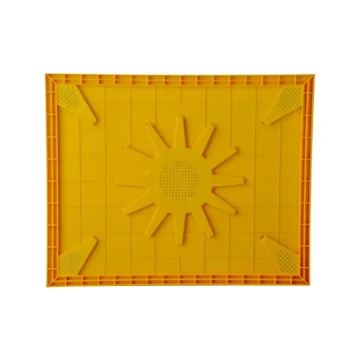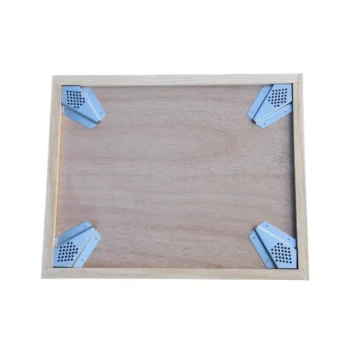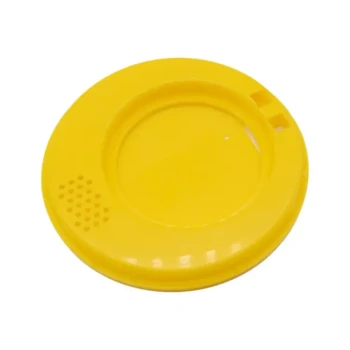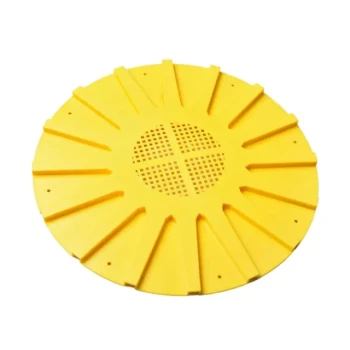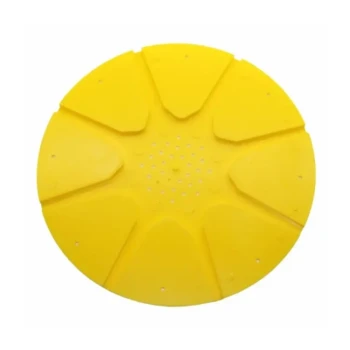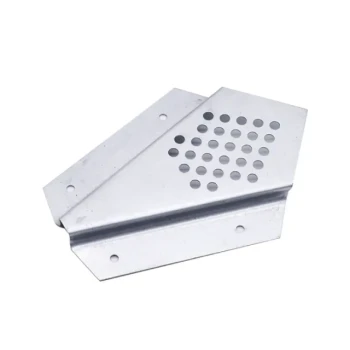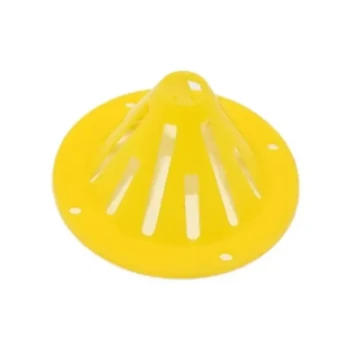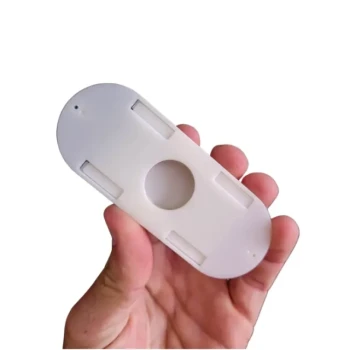To use a triangle bee escape board correctly, several precautions are essential for a successful and stress-free honey harvest. You must install the board with the triangles facing down, leave it on the hive for no more than 24 hours, and ensure there is absolutely no brood in the honey supers you intend to clear. Because a few bees will inevitably remain, always wear your protective gear when removing the honey-filled supers.
The triangle bee escape board is a tool for a gentle harvest, not a fast one. Its effectiveness depends entirely on precise timing and hive conditions, as mistakes can lead to bees re-entering the super or failing to leave in the first place.

How the Triangle Escape Board Works
The One-Way Maze Principle
A bee escape board is essentially a one-way gate for honey bees. The triangle design creates a simple maze that is easy for bees to navigate in one direction—down and out of the honey super—but very difficult for them to navigate back through.
This design exploits the bees' natural tendencies. They can easily exit through the large opening of the triangles but are unlikely to find the small apex entry point to return to the super above.
Leveraging Natural Bee Behavior
The board works best when it aligns with the colony's instinct to cluster together. When placed below a honey super, it encourages the worker bees to move down into the brood box to join the main cluster, especially overnight or during cooler temperatures.
Once they pass through the escape, they are effectively prevented from returning, gradually emptying the super over 12 to 24 hours.
Critical Precautions for a Successful Clearing
Proper Installation is Non-Negotiable
The orientation of the board is critical. It must be placed between the honey super you want to harvest and the brood boxes below.
The triangles must face down toward the brood box, with the flat surface of the board facing up toward the honey super. Installing it upside down will trap the bees in the super, defeating the entire purpose.
Check for Brood Before You Begin
This is the most common reason for failure. If the queen has laid eggs in the honey super, you will have frames containing brood (eggs, larvae, or pupae).
Nurse bees will not abandon the brood. If brood is present, the nurse bees will stay in the super to care for it, and the escape board will be completely ineffective. Only use an escape board on supers that contain only honey and pollen.
Time Your Removal Carefully
The board should be left on the hive for no more than 24 hours. While the maze is difficult, it is not impossible. Given enough time, some resourceful bees will figure out how to get back into the super, undoing all your work.
For best results, install the board in the late afternoon or evening and plan to remove the super the following morning or afternoon.
Use in Cooler Temperatures
Escape boards are most effective when temperatures are mild or cool. During these times, bees are naturally more inclined to move downward and consolidate into the main cluster in the brood box for warmth.
In very hot weather, bees may be more reluctant to leave the upper boxes, slowing down the clearing process.
Understanding the Trade-offs
It Is Not an Instantaneous Solution
The primary trade-off of a bee escape board is speed. Unlike using a fume board or physically brushing bees off each frame, this method requires patience. You must be prepared to wait 12 to 24 hours for the bees to clear out.
Effectiveness Depends on Hive Conditions
The success of the board is entirely dependent on the conditions mentioned above. An undetected patch of brood, a warped box creating an alternate entrance, or leaving the board on too long can all lead to failure. It requires more planning than more forceful methods.
The Risk of Re-entry
The 24-hour limit is a firm rule. If you forget or are delayed in removing the super, you will likely find that a significant number of bees have found their way back in, forcing you to restart the process or use another method.
Making the Right Choice for Your Harvest
Following the correct procedure is key to a quiet and easy harvest. Your primary goal will determine if this tool is the right fit.
- If your primary focus is a gentle and calm harvest: The escape board is an excellent choice, as it minimizes stress on both the bees and the beekeeper.
- If your primary focus is speed: This is not the right tool; a fume board or a bee brush will clear supers much faster, though with more disruption to the colony.
- If you are a new beekeeper: The escape board is a fantastic, low-stress method, but you must be diligent about checking for brood and setting a reminder to remove it on time.
When used correctly, the triangle bee escape board allows for one of the most peaceful honey harvesting experiences possible.
Summary Table:
| Key Precaution | Why It Matters |
|---|---|
| Install with triangles facing down | Creates a one-way exit; prevents bees from returning. |
| Leave on for ≤ 24 hours | Avoids bees re-entering the super. |
| Ensure no brood in honey supers | Nurse bees won't abandon brood, making the board ineffective. |
| Use in cooler temperatures | Encourages bees to cluster downward for better clearing. |
Ready for a peaceful, efficient honey harvest?
At HONESTBEE, we supply commercial apiaries and beekeeping equipment distributors with high-quality, reliable tools like triangle bee escape boards. Our wholesale-focused operations ensure you get the durable equipment you need for a successful season.
Let's discuss how our beekeeping supplies can streamline your harvest — contact our team today!
Visual Guide

Related Products
- HONESTBEE Wooden Bee Escape Board with Triangle Mesh Design for Beekeeping
- HONESTBEE Multi Exit Plastic Bee Escape Board for Efficient Honey Harvesting
- HONESTBEE 4-Way Metal Corner Wooden Bee Escape Board
- Circular Labyrinth Bee Escape for Efficient Hive Management
- Durable 16 Way Circular Bee Escape for Efficient Honey Harvesting
People Also Ask
- What is the effectiveness of the Bee Escape Board? Achieve a Calm, 95% Bee-Free Honey Harvest
- What are the recommended conditions for using the triangle bee escape board? Ensure a Successful, Low-Stress Honey Harvest
- What precautions should be taken when using the triangle escape board? Master Gentle Honey Harvesting
- What are the available frame sizes for Triangular Escape Boards? Find the Perfect Fit for Your Hive
- Are Triangular Escape Boards ready to use? Yes, and Here's How to Use Them Effectively

